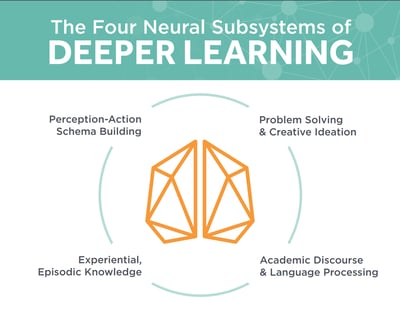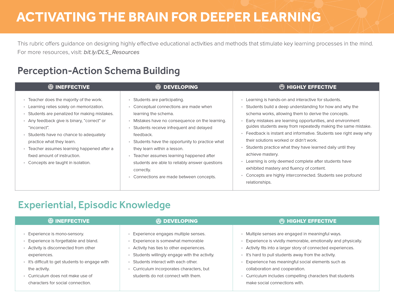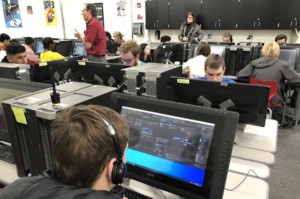What Happens When Principals and District Administrators Sit in the Student’s Chair?

Heera Kang
This post was originally published on MIND Research Institutes’s blog.
With nearly a third of Americans saying they would rather clean a bathroom than do math, schools have reached a tipping point where the way math has always been taught is just not working for educators or students anymore.
Earlier this year, pioneers in education, neuroscience, math and public policy gathered for a very different kind of professional development event. The Deeper Learning Symposium: Empowering Your Math Superheroes welcomed participants to get hands-on and experience math with all of their senses. The main topic of discussion: innovating and changing math education.
In one of the first sessions, participants put themselves in the place of students. They experienced two different kinds of lessons—one showing a solid, but traditional, procedural lesson and another that exemplified innovative techniques not centered around memorizing formulas and performing computations. Watch what happened:
Breaking the Status Quo
In this experience, classroom moderators emphasized:
- facilitating exploration over rote memorization
- hands-on, visual and conceptual learning over procedural learning
- real-world application and story-based problem solving over equations to solve
Not only do these new methods bring a much higher level of student engagement, science tells us that these instructional strategies actually activate a deeper and more rigorous learning process in the brain.
Discovering New Ways to Teach Math By Understanding the Brain
More than ever, forward-thinking educators are looking to understand the science of learning to rethink and transform traditional models of instruction. In the Symposium keynote, Dr. Matthew Peterson, CEO and cofounder of MIND Research Institute, provided an overview of the four neural subsystems that work together to bring deep understanding:
Perception-Action Schema Building
Most of the brain is devoted to building the circuitry responsible for the things we know automatically, says Dr. Peterson, like how we answer the question, “What color is grass?” Green. Right. The brain builds this kind of automatic knowledge through a continual cycle of perceiving or detecting something, taking an action and then experiencing the immediate effects of that action: the perception-action cycle. The brain consolidates this knowledge into interconnected webs of understanding called schemas. In math, it takes time to form these foundational schemas through repetition and mastery. Once formed, these schemas provide a powerful framework of knowledge that allows students to go deeper and think critically and creatively around a topic.
Experiential, Episodic Knowledge
In contrast to perception-action schema building, which requires repetition and time, there’s a kind of learning that happens instantaneously. “One experience and you’ll remember it for the rest of your life,” says Dr. Peterson. It occurs in the lower part of the brain and no surprise that this is that kind of knowledge that results from an experience that’s vividly memorable, both emotionally and physically—stories with compelling characters, field trips, traveling. In learning, these are the activities you can’t pull students away from. These highly engaging experiences present powerful learning opportunities.
Problem Solving & Creative Ideation
The front part of the brain uses the experiential knowledge and perception-action schemas that we’ve built to think over space and time, to perform multistep problem solving, to be creative and ideate. Here students are moving beyond repetition and automaticity of mathematical facts into applying those facts in new and novel situations, and even across academic subject areas.
Academic Discourse and Language Processing
“You don’t really understand something until you’ve had to explain and justify your reasoning,” says Dr. Peterson. Our language subsystems, occurring in various sections of the brain, rely on all the other learning subsystems. We draw upon our schemas of understanding, we draw upon our experiential knowledge. We use our prefrontal cortex to be creative and problem solve when we’re trying to put our ideas into words.
“It’s really powerful and useful to think of these four subsystems as having different behaviors,” says Dr. Peterson. “All students have the cognitive horsepower to become mathematical superheroes, and we need to be able to create educational environments that allow them to tap into those underlying neural subsystems to be able to develop those mathematical superpowers.”
This rubric provides guidance in optimizing and innovating educational environments for developing each of these four neural subsystems.
For more, see:
- Brain Training Breakthroughs: Improving Student Growth and Behavior
- Place-Based Discoveries Etch Learning into Your Brain
- 9 Simple Steps that Inspire Inquiry-Based Learning in Science
Heera Kang is Manager of Engagement Content and Design at MIND Research Institute. Follow them on Twitter at: @MIND_Research.
Stay in-the-know with all things EdTech and innovations in learning by signing up to receive the weekly Smart Update. This post includes mentions of a Getting Smart partner. For a full list






0 Comments
Leave a Comment
Your email address will not be published. All fields are required.